This article was medically reviewed by Victor Catania, MD. Dr. Catania is a board certified Family Medicine Physician in Pennsylvania. He received his MD from the Medical University of the Americas in 2012 and completed his residency in Family Medicine at the Robert Packer Hospital. He is a member of the American Board of Family Medicine.
There are 18 references cited in this article, which can be found at the bottom of the page.
This article has been viewed 78,594 times.
A hernia is the result of a weak point in the abdominal muscles that allows internal organs to bulge out of the abdominal cavity. Treatment is usually surgical, and is a very common recommendation for primary care providers.[1] Before and after surgery, though, there are also steps you can take on your own to help your hernia heal.
Steps
Diagnosing a Hernia
-
1Determine whether you’re at risk. Though hernias can also occur after surgery, inguinal hernias are by far the most common type of hernia. This is the hernia in which a weak point in the abdominal muscles allows internal organs to bulge out of the abdominal cavity. Although anyone can get a hernia, there are certain at-risk groups that are more likely.[2]
- Men are nine times more likely to get a hernia than women.[3]
- Men between the ages of 40 and 59 are particularly at risk of hernia.
- People who regularly do heavy lifting, like weightlifters and manual laborers are also at increased risk.
-
2Learn the risk factors for women. Although women are at a lower risk of hernia, you should still know the categories of women who most often get them:[4]
- Taller women
- Women with chronic cough
- Pregnant or obese women who may get an umbilical hernia
- "Femoral hernias" tend to cause bowel blockage in women.
Advertisement -
3Take note of common misconceptions about risk factors. Surprisingly, obese and overweight men are not at risk of inguinal hernia. This may be due to a sedentary lifestyle that avoids heavy lifting. Tobacco and alcohol use also have no effect on inguinal hernias.[5]
-
4Look for the symptoms of an inguinal hernia. Inguinal hernias present as a bulge in the groin that gets worse when straining. Activities that can worsen the bulge include constipation, lifting heavy objects, manual labor, or coughing and sneezing. This bulge is actually the organs in your abdomen poking out through weakened muscle tissue. Usually, you can manually push them back into the abdomen by applying pressure. Trouble starts when you can no longer “reduce” the hernia or push it back behind the abdominal muscles. Other symptoms of hernia include:[6]
- Pain that can be described as pulling, tugging, or burning. It can feel worse after physical activity.
- Pain relief when lying on your back, when organs are restored to their rightful place.
- Possible gurgling sound when bowels are in the hernia.
- Rigid bulge: If you can't push the hernia back in, the bowels may have become trapped, or "incarcerated." Incarcerated hernias require emergency medical care.
-
5Get a physical examination from a doctor.[7] To diagnose a hernia, the doctor will first look for a bulging area about the size of a golf ball in the groin, next to the hip bone. He'll have you lay back to see if the bulge recedes on its own when you lay down. He may manipulate the bulge manually to see if the hernia can be pushed back behind the abdominal wall. If the intestine is present in the hernia, the doctor will be able to hear gurgling with a stethoscope.
-
6Allow the doctor to examine the hernia through the scrotal sac.[8] With male patients, the doctor may try to feel the hernia from below to confirm its presence. He will press a gloved finger up through the loose scrotal sac. Then, he'll ask you to cough or bear down like you're making a bowel movement. If you have a hernia, he will feel it hitting his finger firmly. The doctor will check both sides of the scrotum to be confident in the diagnosis.
-
7Have an ultrasound done if necessary.[9] In the majority of cases, the doctor will be able to diagnose a hernia through a simple physical exam. In some cases, though, the hernia may be difficult to diagnose. If he's not confident in his diagnosis, the doctor may order an ultrasound that will visually confirm the hernia. The procedure is relatively cheap and non-invasive.
-
8Discuss your options with your doctor. If you have a small, asymptomatic hernia, the doctor may just send you home with instructions on how to monitor the hernia's status. In most cases, the hernias resolve on their own without surgery. If you observe worsening symptoms, you may need to get surgery. Surgery is recommended for patients with large hernias that present with multiple symptoms. People who have recurrent hernias after an initial surgical repair also need surgery.[10] Pregnant women and women who've previously given birth are at higher risk for recurrent hernias.
- Incarcerated hernias are a surgical emergency and need immediate attention. When this happens, the bowel gets blocked and strangulated, cutting off blood flow.
Getting Surgery
-
1Learn what happens during an open hernia surgery. The vast majority of hernia surgeries are open surgeries. During this procedure, the surgeon will first separate the hernia from its surrounding tissues. Then, he will remove the hernia sac or push the intestines back into your abdominal cavity. The weakened abdominal muscles are closed with strong stitches.[11]
- Because this surgery opens the abdominal muscles, some people experience further muscle weakness and hernia after surgery. To prevent this, surgeons often sew a piece of mesh into the abdominal wall. This helps strengthen the wall and prevent a hernia from recurring.
-
2Consider getting laparoscopic surgery.[12] Only about 10% of all hernia surgeries are done laparoscopically. Instead of making a large cut to your abdominal muscles, potentially weakening them further, the surgeon makes three to four smaller cuts. He uses a laparoscope — a tiny camera mounted on a long, thin tube — to see inside the body instead of opening the patient up. The laparoscope and surgical tools are inserted through the small incisions, but otherwise, the surgery is the same as open surgery.[13]
-
3Discuss which surgery is best for you with your doctor. Open surgeries are more common, and surgeons may be more comfortable with them. They also provide a clearer view of the tissue being manipulated. This is why they’re recommended for large or complicated hernias. However, a laparoscopic surgery heals faster with less scarring, and causes less pain.[14]
-
4Prepare for your surgery. Make sure the doctors have an updated list of all drugs (both prescription and over-the-counter) and supplements you're taking. On the night before the surgery, you must fast after midnight. This includes both food and liquids. Ask the doctor if you will be released from the hospital on the same day as the surgery. Make sure you have a ride home from the hospital if you will.[15]
-
5Stay in the hospital for monitoring, if necessary. If you had a complicated hernia or surgery, the hospital may want to keep you behind for a few days after surgery.[16] Specifically, they will monitor your diet to make sure you ease back into normal amounts of food. In some cases, an abrupt return to a normal diet can cause intestinal paralysis.
Recovering from Surgery at Home
-
1Rest and care for yourself during the recovery period. It will likely take about four to six weeks to recover from an open hernia surgery. Laparoscopic surgeries have a much shorter recovery time of one to two weeks. Your medical team will give you detailed instructions on when you can resume normal activities. Until then, rest so you don’t further weaken the fresh cuts in your abdominal muscles.[17]
-
2Take a light walk the day of your surgery. Although you’ve just had surgery, it's important to get up and moving as soon as you feel ready. This jumpstarts the recovery process, but more importantly, it prevents blood clots.[18]
-
3Limit intense physical exertion during the recovery period. Both types of surgery will allow you to return to normal activities after two to three days. But you should not engage in any strenuous activity or lift anything over 20 pounds for one to two weeks. After open hernia surgery, you should avoid strenuous activity of lifting anything over five to ten pounds for three weeks. In both cases, defer to the judgment of your doctor when deciding when you can resume heavy lifting.[19]
-
4Ease back into a normal diet. There are technically no restrictions on diet after hernia surgery. However, some patients feel nauseous for a few days after surgery. In that case, begin with a liquid diet of water, juices, smoothies, and broths/soups. Transition to soft foods like bananas or mashed potatoes, and work your way back to a normal diet. Also start with smaller meals and work your way back up to normal sized meals.[20]
-
5Care for your surgical incisions. In both types of surgery, your incision will be covered in surgical dressing or steri-strips. If they're covered with gauze or Band-Aids, refresh them as needed. If the surgeon used steri-strips, leave them to fall off on their own.[21]
- Keep the incisions dry for 24–48 hours after surgery. Cover them in something like a "press 'n seal" kitchen product to keep them dry in the shower.
- After 48 hours, expose the incisions to running shower water, and pat dry gently. Then reapply fresh dressing.
- Do not allow the incisions to soak (bathtub, pool, ocean) for 10–14 days after laparoscopic surgery or four to six weeks after open hernia surgery.
-
6Keep a post-operative appointment with the surgeon. Even if you are feeling well and appear to have no complications, it is important to make — and attend — a post-operative appointment with your doctor. This helps ensure that things are progressing well and minimizes risk for post-operative complications.[22]
-
7Take stool softeners. During the procedure, the surgeon uses an anesthetic that paralyzes the bowel. As a result, you may be constipated for about a week after the surgery. The last thing you want to do after hernia surgery is strain during bowel movements and possibly do more damage. To prevent this, use an over-the-counter stool softener like milk of magnesia or Metamucil.[23]
- If you don't want to use stool softeners, the best thing you can do is stay hydrated. Drink at least eight to ten 8 oz. glasses of water per day.
- Drink prune juice and apple juice to naturally soften stool.
-
8Contact the doctor if you observe signs of complication. Though hernia surgeries are very common, all surgeries come with a risk of complication. Contact your doctor if you have a fever over 101.5 °F (38.6 °C), pain or swelling in your calf, or have trouble breathing. Increased drainage from an incision and altered skin color should also be reported. But you should get to an emergency room immediately if you observe any of the following:[24]
- Excessive bleeding from an incision
- Vomiting
- Change in mental status (fuzziness, wooziness, loss of consciousness)
- Inability to breath
Warnings
- A hernia is a serious issue. Do not put off going to the doctor.⧼thumbs_response⧽
References
- ↑ American Family Physician: Patient Education Guide,, June 2013,15 (87) 12, online
- ↑ https://www.stamfordhealth.org/healthflash-blog/surgery/hernia-types-risk-factors/
- ↑ Kim E Leblanc MD PhD, Leanne LaBlance MD, Karl LeBlanc MD Inguinal Hernias: Diagnosis and Management., American family Physician.2013 June 15 87 (12) 844-848
- ↑ https://pubmed.ncbi.nlm.nih.gov/9366619/
- ↑ Kim E Leblanc MD PhD, Leanne LaBlance MD, Karl LeBlanc MD Inguinal Hernias: Diagnosis and Management., American family Physician.2013 June 15 87 (12)
- ↑ https://my.clevelandclinic.org/health/diseases/16266-inguinal-hernia
- ↑ http://www.ncbi.nlm.nih.gov/books/NBK423/
- ↑ http://www.ncbi.nlm.nih.gov/books/NBK423/
- ↑ http://www.ncbi.nlm.nih.gov/pmc/articles/PMC1964363/
- ↑ https://medlineplus.gov/ency/article/007406.htm
- ↑ https://my.clevelandclinic.org/health/treatments/17967-hernia-repair-surgery
- ↑ http://www.sages.org/publications/patient-information/patient-information-for-laparoscopic-inguinal-hernia-repair-from-sages/
- ↑ https://my.clevelandclinic.org/health/treatments/17967-hernia-repair-surgery
- ↑ https://www.nhs.uk/conditions/inguinal-hernia-repair/what-happens/
- ↑ https://myhealth.alberta.ca/Health/aftercareinformation/pages/conditions.aspx?hwid=abr6761
- ↑ https://www.nhs.uk/conditions/inguinal-hernia-repair/what-happens/
- ↑ https://myhealth.alberta.ca/Health/aftercareinformation/pages/conditions.aspx?hwid=bo1696
- ↑ https://www.nhs.uk/conditions/inguinal-hernia-repair/recovery/
- ↑ https://www.nhs.uk/conditions/inguinal-hernia-repair/recovery/
- ↑ https://www.nhs.uk/conditions/inguinal-hernia-repair/recovery/
- ↑ https://myhealth.alberta.ca/Health/aftercareinformation/pages/conditions.aspx?hwid=bo1696
- ↑ https://myhealth.alberta.ca/Health/aftercareinformation/pages/conditions.aspx?hwid=bo1696
- ↑ https://myhealth.alberta.ca/Health/aftercareinformation/pages/conditions.aspx?hwid=acg3996
- ↑ https://www.urmc.rochester.edu/encyclopedia/content.aspx?ContentTypeID=85&ContentID=P01390
About This Article
To cure a hernia, start by getting a physical examination by a doctor so they can diagnose you and determine the best course of treatment. If they determine that you have a small, asymptomatic hernia, they may just send you home to wait for the hernia to disappear on its own. If you have a large hernia with multiple symptoms, your doctor may recommend surgery to remove it. In that case, your doctor will tell you which kind of surgery, open or laparoscopic, is best for your situation. To learn how to recover from hernia surgery, scroll down!





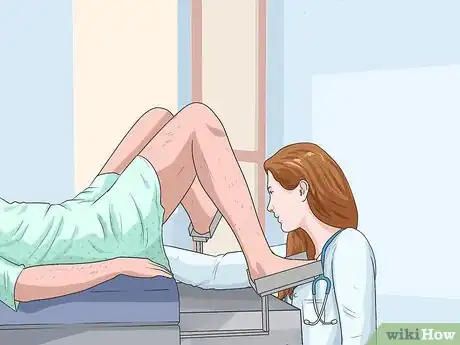
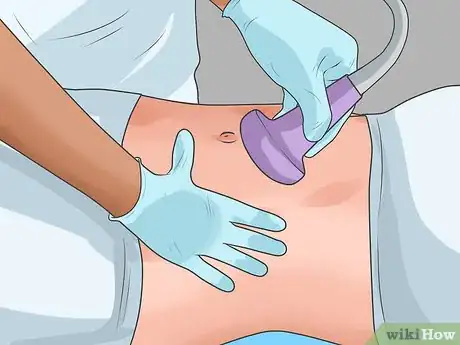

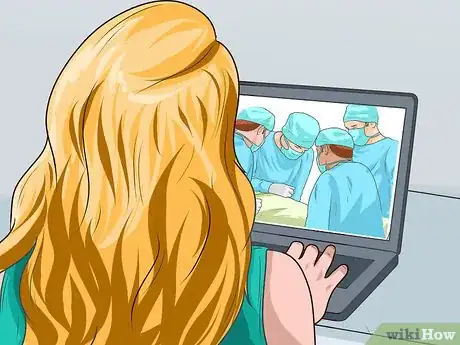


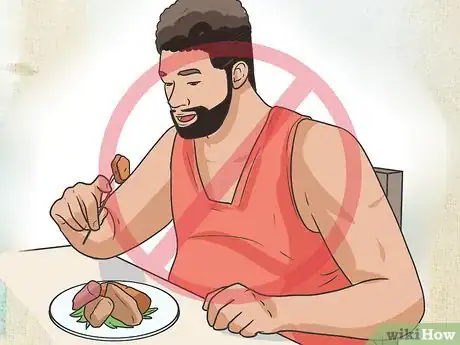
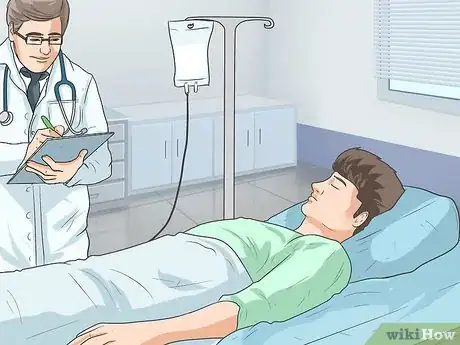


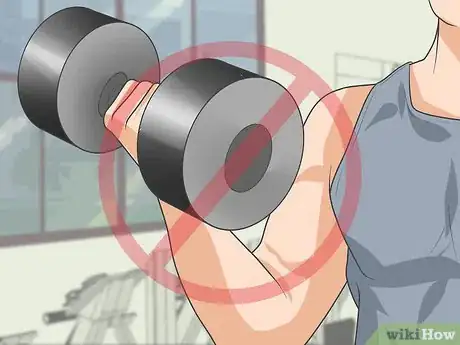


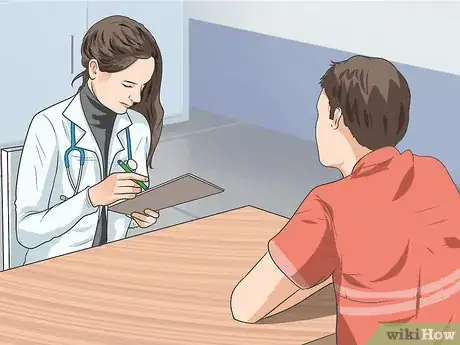





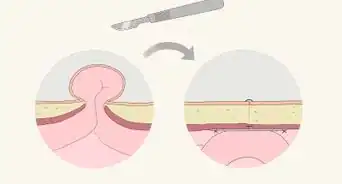


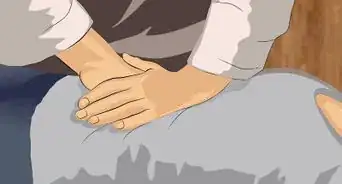

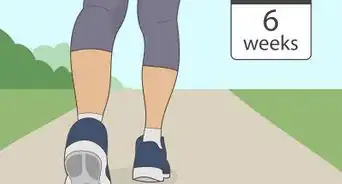


















































Medical Disclaimer
The content of this article is not intended to be a substitute for professional medical advice, examination, diagnosis, or treatment. You should always contact your doctor or other qualified healthcare professional before starting, changing, or stopping any kind of health treatment.
Read More...